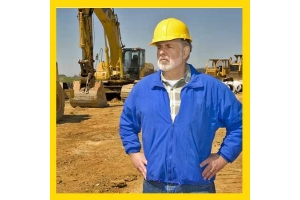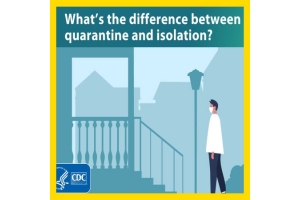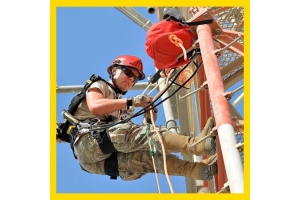Currency
-
July 19, 2022When it comes to promoting worker safety, employers have a vested interest. U.S. employers spend more than $1 billion a week on workers’ compensation costs for non-fatal injuries. In an effort to reduce these numbers, employers also spend another $1,111 on safety training for each employee on the job site. Despite these high costs, these efforts are still not enough to decrease worker injuries.
Keeping workers safe requires a proactive approach, not only to prevent injuries but also to retrain employees in proper ergonomics. Additionally, reducing the high cost of workplace safety incidents requires an immediate response to injury care that avoids costly ER visits whenever possible.
As you seek to develop workflows and processes that improve employee safety at your organization, you may be asking what safety initiatives you can implement now that will provide enough ROI to justify the cost of the program going forward.
-
July 19, 2022In 2020, residents and commercial building owners began focusing on indoor air quality. The Center for Disease Control informed society the COVID-19 virus can spread through air particles in small spaces. By maintaining good indoor air quality, individuals can protect their health and well-being.
Lowering emissions, removing pollutants and adopting new building designs may help individuals improve the air in a structure. Clean indoor climates increase workers’ productivity, which benefits business owners. Reducing local emissions also improves a structure’s sustainability and eco-consumer appeal.
Air quality limitations
Constructors can create better access to clean air by first evaluating any limitations. One significant challenge comes from inefficient building designs. Some structures contain few windows, which limits cross ventilation.
-
July 19, 2022In the first six months of 2022, 22 workers died from trench hazards, according to OSHA. In 2021, only 15 workers died the entire year from these hazards.
With these numbers, OSHA announced an increase in oversight and enhanced enforcement, in part under the National Emphasis Program for excavations.
According to a press release, OSHA will use all tools available and will put “additional emphasis” on evaluating penalties. More inspections will occur across the country, where OSHA officers might “may stop by, and inspect, any excavation site during their daily duties,” OSHA said.
“The Occupational Safety and Health Administration is calling on all employers engaged in trenching and excavation activities to act immediately to ensure that required protections are fully in place every single time their employees step down into or work near a trench,” -
July 19, 2022East Lansing, MI — A recent study of workers at sand, gravel and stone mines in Michigan found a higher number of doctor visits for shortness of breath compared with workers in other production industries.
Researchers at Michigan State University examined lung disease as well as exposure to silica, various allergens and other irritants among more than 1,200 surface mine workers from around the state. They asked the workers, who each had at least 15 years of experience, to complete a questionnaire and provided them with free chest X-rays and breathing tests.
Results showed “an increased prevalence of seeing a doctor for shortness of breath, possible work-related asthma and chronic obstructive pulmonary disease,” according to an MSU press release. In the release, lead study author Hailey TenHarmsel, a research assistant in the MSU College of Human Medicine, -
July 05, 2022It’s not quite a summer, but wildfire season is already upon us. As a result, West Coast states are taking action to protect workers from exposure to wildfire smoke.
The Washington State Department of Labor & Industries adopted new emergency rules that add to existing protections for outdoor workers from wildfire smoke and heat exposure.
Effective June 15, Washington employers are required to monitor the air quality index (AQI) and take a specific action when workers are exposed to AQI levels of 69 or higher, with additional requirements imposed when AQI is 101-500 and 500 or higher. Employers must also establish hazard communication systems with employees, maintain wildfire smoke response plans, implement training programs for employees and supervisors and monitor employees for symptoms of exposure (and treat as necessary). Washington employers may also be required to provide free respiratory protection at certain AQI levels.
-
July 05, 2022The hazards of combustible dust are life-threatening. From 1980 to 2005, combustible dust incidents lead to 199 worker deaths and 718 injuries, according to OSHA.
In 2010, at AL Solutions in New Cumberland, West Virginia, an explosion and fire occurred from combustible dust. According to the U.S. Chemical Safety Board and a safety video, the metal recycling facility “processed scrap titanium and zirconium metal.” A machine needing additional repairs (it had allegedly been repaired, but not to a high enough standard) sparked and “likely ignited” the zirconium. The spark started a fire and caused another explosion. Three workers died in the incident, and one was injured.
There are many materials workers are around on a daily basis that can be flammable as dust, such as grain, plastics, coal, and aluminum. Even if an object is not flammable, it may be like dust.
-
July 05, 2022A new enforcement initiative to protect miners from overexposure to respirable crystalline silica was announced on June 8 by the U.S. Mine Safety and Health Administration (MSHA).
The enforcement initiative will serve as a form of protection for miners while the agency continues the rulemaking process toward developing an improved mandatory health standard addressing respirable crystalline silica.
Thousands of miners are exposed each year
Crystalline silica is a common mineral found in sand, stone, concrete, and mortar. Cutting, sawing, grinding and drilling materials containing crystalline silica can result in minute particles that are at least 100 times smaller than ordinary beach sand. This respirable form of crystalline silica becomes airborne and can then be easily inhaled into the lungs.
Overexposure increases the risk of -
July 05, 2022Tumwater, WA — After a record-setting heat wave and numerous wildfires last summer, the Washington State Department of Labor & Industries has issued emergency rules intended to protect workers exposed to outdoor heat and unhealthy air caused by wildfire smoke.
Announced June 1, the emergency rules will stay in effect through Sept. 30. Targeted workers include farm and construction workers, roofers, road crews, and other outdoor workers. Washington L&I says it’s taking steps to develop permanent rules to address the hazards.
Under the rule on outdoor heat, when the temperature reaches 89° F, employers must:
Offer enough cold water for each employee to drink at least a quart an hour.
Provide sufficient shade “large enough for and close enough to” outdoor workers.
Allow and encourage workers to take paid preventive cooldown breaks when









